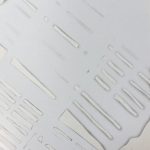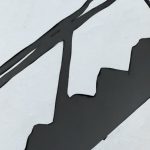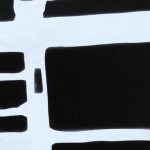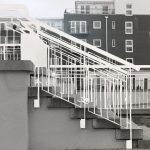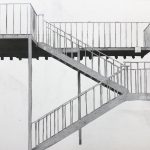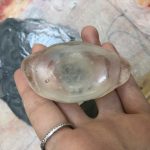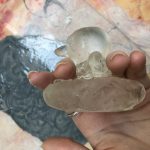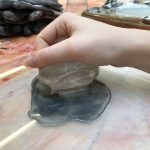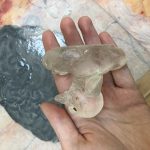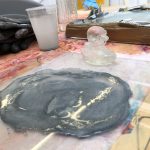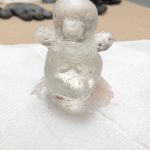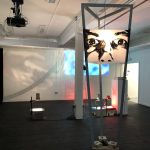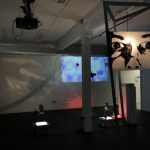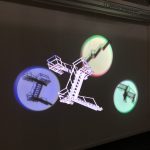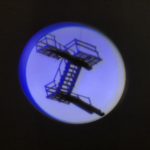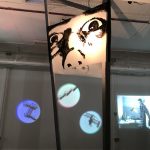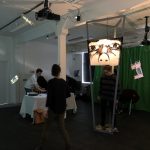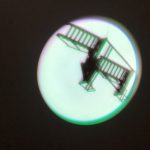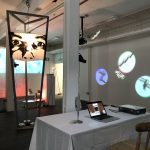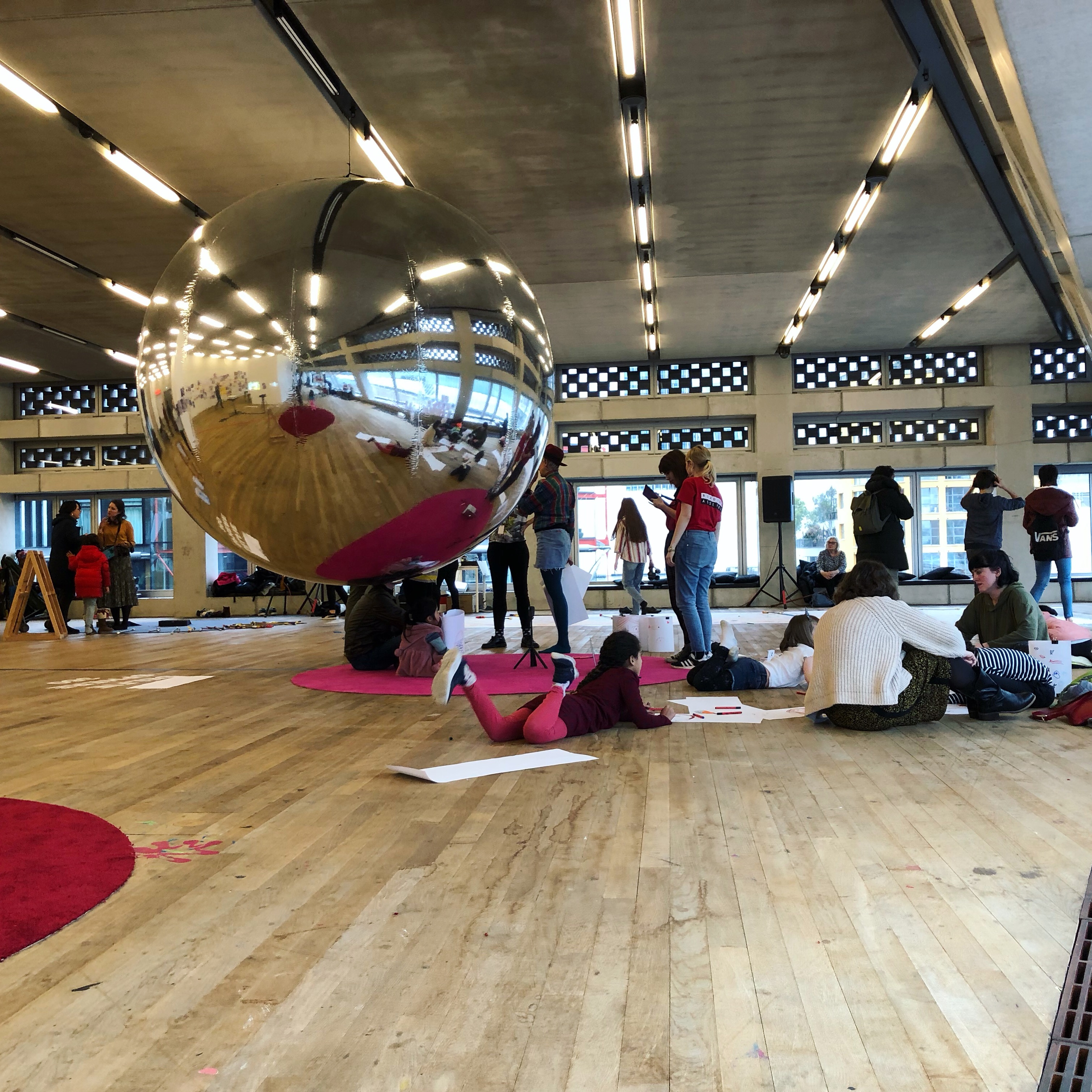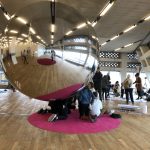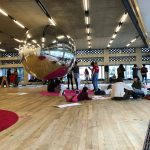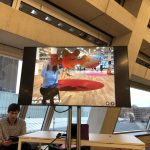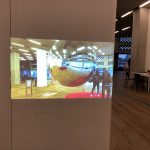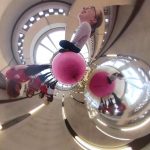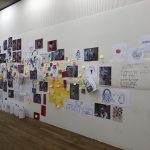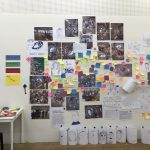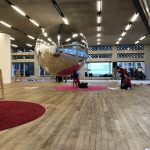I was invited back to the Tate Exchange 2019 with Art Lab for ‘a series of participatory workshops that will enable visitors to explore the theme of movement’. There were several stations on the 5th floor of the Blavatnik Building in Tate Modern that lead people through different types of motion. Some of these were by other departments from the School of Arts and Graphic Communication at the University of Reading, including performance workshops and conversations around the theme of travelling and movement.
One of these was a ‘listen and draw’ activity, asking people to react on paper with pens and pencils to what they heard on headphones, in a silent disco manner. The sound recordings were made by first year students in the module Reading Objects Writing Images. Both schools and members of the public found this a very fun activity which allowed freedom around the papered space. As they were approaching a large piece of paper that was not blank, it was less daunting and allowed further engagement from those of all ages.
The second station of Art Lab’s was that of a selfie sphere which was a big shiny ball suspended from the ceiling. Participants were invited to draw a self portrait in this sphere and then take a 360 image with a GoPro with these self portraits on their head. We found that many would want a photo without the drawing, however it was still a very engaging activity with all ages.
The last station that Art Lab ran was the one I helped out most frequently with over the weekend. This used Augmented Reality (AR) through an iPad, which was placed onto a TV screen. It was originally intended for people to act like sculptures, recreating images, however it ended up that people were interacting more with the objects and animals that we were placing on the screen. We also found that this interaction caused a lot more enjoyment, and allowed us to play around more with the software. It was particularly funny to see the confused faces of those who saw the object on the screen, but not on the ground in front of them.
I also helped in the social media management of the event, posting to @artlabuor and @unirdg_art Instagram accounts to promote the activities. Interacting in a different way than helping out at the stations allowed me to see more of the background work that goes into such a large event. I look forward to see more of the running of large events such as this, and helping in the Tate Exchange with ArtLAB next year.

